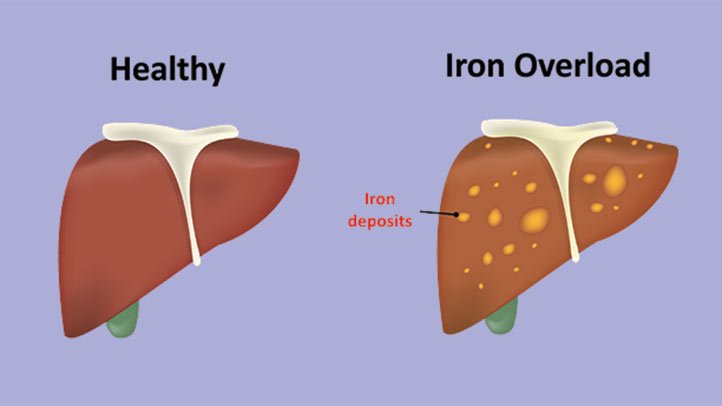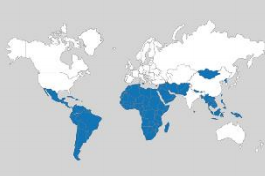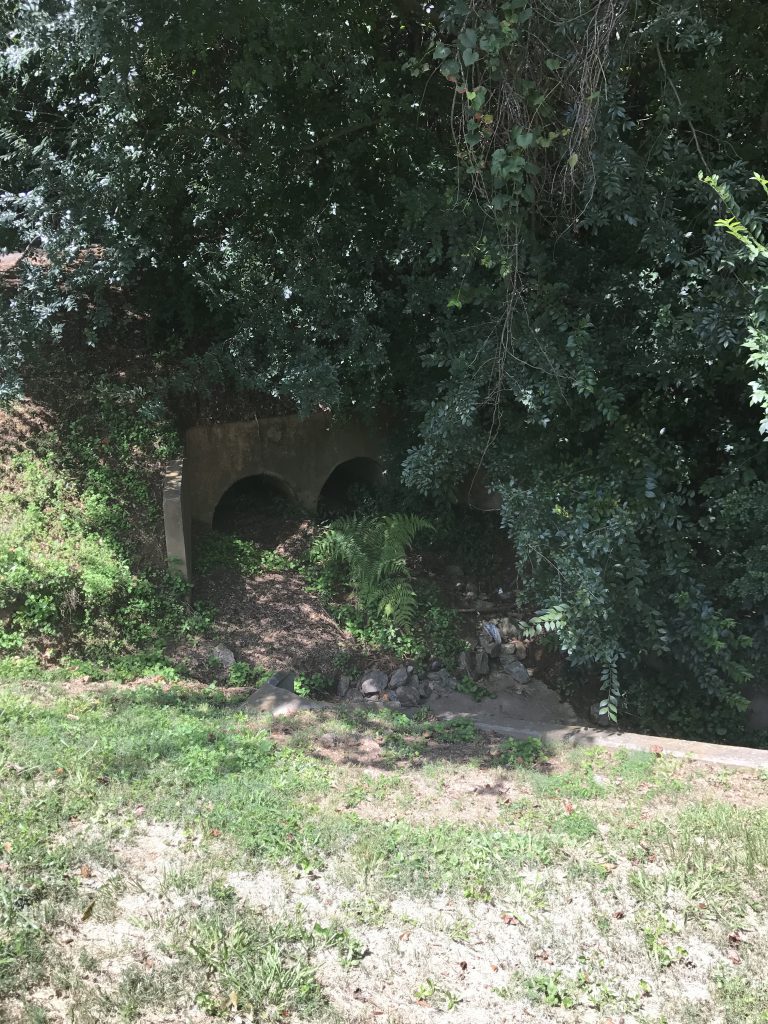By: Silvy Park
What is it?
Hemochromatosis is a disorder in which the body stores too much iron (excess iron is not effectively removed from the blood). This is dangerous because too much iron is toxic and can poison your organs, resulting in severe organ failure and even death. Common symptoms include joint pain, fatigue, general weakness, weight loss, and stomach pain. The prognosis for people who have hemochromatosis depends on how much organ damage they have upon diagnosis. Therefore, early diagnosis is important for treatment. Moreover, Hereditary Hemochromatosis, or HH, is more common in Caucasian men. In fact, some research highlights that men are five times more likely to have it than women.
The HFE Gene
The HFE gene is responsible for the genetic variation. It makes sense that the variations change the gene expression because the gene encodes for the hemochromatosis protein in humans and regulates iron absorption by regulating the interaction of the transferrin receptor with transferrin.
There are two main alleles in the HFE gene: rs1800562, also known as C282Y (risk genotype AA), which can cause a serious form of Hemochromatosis and rs1799945, also known as H63D (risk genotype GG), which can cause a mild form of Hemochromatosis [4].
Besides Type 1 HH, there are also Type 2 and Type 3 hemochromatosis, which are both also recessively inherited. Type 2 hemochromatosis results from mutations in the HJV or HAMP genes, while Type 3 hemochromatosis results from mutations in the TFR2 gene.
Pros and Cons: Why Should You Get Tested?
Pros:
- Hemochromatosis is one of the most common hereditary disorders in the United States, with about 1 in every 8-12 Caucasians in the United States being a carrier (one copy of the HFE defect) and about 5 in every 1,000 to have two copies of the HFE defect [3].
- Genetic testing can show whether you have one or two recessive HFE gene(s).
- You can be prepared. Symptoms of hemochromatosis usually appear in men between the ages of 30 and 50. Symptoms often do not appear in women until after age 50 or after menopause, most likely because women lose iron from the blood loss of menstruation and childbirth.
- Getting a test done can help a person avoid serious symptoms of the disorder. If left untreated, the disorder can lead to cirrhosis of the liver, diabetes, hypermelanotic pigmentation of the skin, heart disease, liver cancer, depression, and fatigue, all of which can be easily avoided if a person is treated beforehand [4].
- HH is a candidate for genetic screening because the mutations associated with HH are present at birth, even though symptoms do not show up until adulthood.
- If people who have hemochromatosis want offspring, genetic testing and counseling can determine the likelihood of the parents passing the HH genes on to their children.
Cons:
- Having two copies of the Hereditary Hemochromatosis alleles will not necessarily cause the disorder.
- Tests cannot predict whether you’ll develop signs and symptoms of hemochromatosis. Therefore, there is no strong evidence supporting a connection between these variations and the trait in questions [1].
- The test is relatively expensive, considering that the odds of actually having Hereditary Hemochromatosis and its extreme symptoms are very unlikely.
Testing
A recommended test for hemochromatosis is an iron panel of blood tests. A complete iron panel typically includes the following: Ferritin, Transferrin Saturation %, Serum Iron, and TIBC/UIBC [5]. DNA genetic testing can be done by collecting calls from the inside of your mouth using a cotton swab or drawing blood from an arm vein [3]. Cost is usually around $100 to analyze the HFE gene. A comprehensive genetic test that analyzes five genes associated with HH is shown below. Cost varies but is usually less than $100.

Q & A:
If someone in the family has already tested positive, what are the chances that a child, nephew, aunt will test positive?
Most people who have HH inherit two hemochromatosis genes, one from each parent. Having a person in your family with HH does increase your chance of having HH as well, but not everyone who inherits the genes develops symptoms or complications of the disease.
What should be your plan if you test positive or negative?
HH can be easily treated by phlebotomy or regular donation of blood to reduce blood iron levels. Iron chelation therapy uses medicine to remove excess iron from your body. However, those with two copies of Hereditary Hemochromatosis who are diagnosed as not having Hemochromatosis should still familiarize themselves with the symptoms in case it develops later.
What type of screening is recommend if you do test positive?
If you test positive for the HFE gene mutation, it is recommended that you test for Hemochromatosis through an iron panel of blood tests.
What type of environmental factors should you consider changing in response to a positive test?
Keeping a low-iron diet can help a lot. For example, avoid taking iron pills and limit the intake of Vitamin C.
References
[1] Adams, P. C. (2002). Screening for Hemochromatosis. BC Medical Journal, 44. Retrieved from https://www.bcmj.org/articles/screening-hemochromatosis—should-we-do-last-test-first
[2] Chandrasekharan, S., Pitlick, E., Heaney, C., & Cook-Deegan, R. (2010). Impact of gene patents and licensing practices on access to genetic testing for hereditary hemochromatosis. Genetics in Medicine, 12. doi: 10.1097/gim.0b013e3181d7acb0
[3] Hemochromatosis. (n.d.). Retrieved from https://www.nhlbi.nih.gov/health-topics/hemochromatosis.
[4] Hemochromatosis. (2018, May 21). Retrieved from https://www.snpedia.com/index.php/Hemochromatosis.
[5] Lewis, E. (2019, July 25). Hemochromatosis Lab Testing. Retrieved from https://hemochromatosishelp.com/hemochromatosis-testing/.





